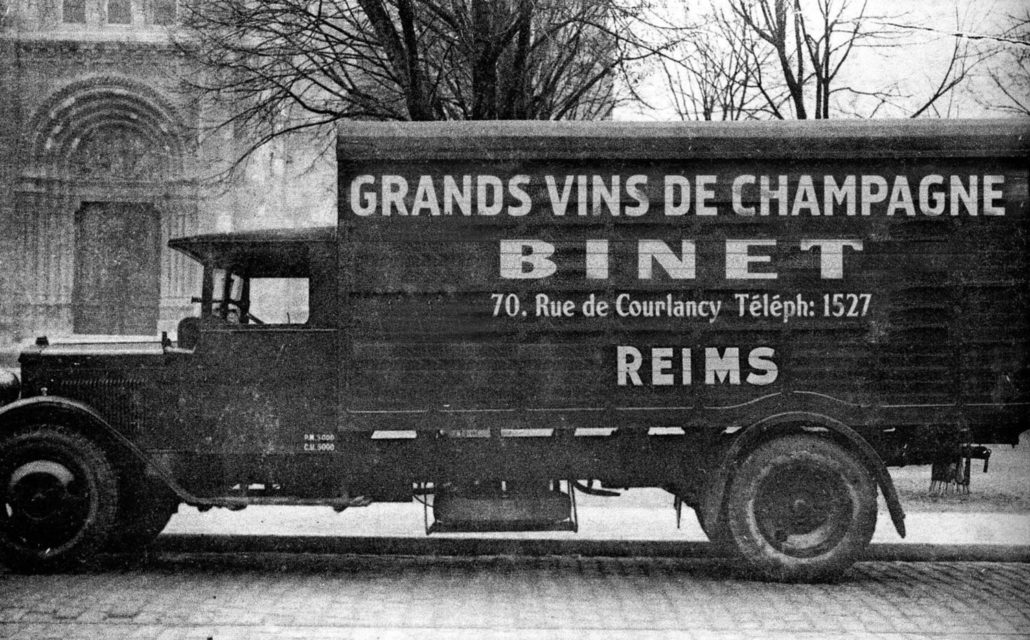Champagne history about the noblest of all sparkling wines
In der Champagne wird bereits seit dem 4. Jahrhundert Wein angebaut. Damals ahnte jedoch noch niemand, welch exklusives Getränk einmal das Image dieser Region prägen würde. Aufgrund der privilegierten Lage im Herzen Europas entwickelte sich die Champagne im frühen Mittelalter schnell zu einem pulsierenden Handelszentrum. Die hochwertigen Weine der Region erlangten dadurch auch über Frankreichs Grenzen hinaus einen guten Ruf.
Wine enjoyed great popularity among the European aristocracy, and Louis XIV made it his house wine, thereby initiating a trend. However, until around 1650, these were generally still wines. It was the English who forced the moussing of wine. It developed into a custom to make the wine lively and sparkling using cinnamon, cloves, sugar and molasses). The inhabitants of Champagne would never have thought of adding such strange ingredients to their wines.
Champagne history
Bendictine monks like Dom Pérignon and Frère Jean Oudart would eventually refine the methods of Champagne production. Originally, Dom Pérignon's main aim was to give the wine from Champagne a unique quality by skilfully blending the grapes. However, Dom Pérignon and his contemporaries were certainly not initially interested in giving the wine sparkling bubbles. Rather, he was irritated by the slight sparkle that he observed in some wines in his role as cellar master and considered to be a flaw.
The champagne process
The fine and originally undesirable bubbles are likely to have been the result of a natural process that was partly determined by the cool and harsh climate of Champagne and the short growing season for the wine. As the grapes were often harvested late in the year, the yeasts contained in the pressed grapes did not have enough time to fully convert the sugar into alcohol. The cool winter temperatures brought the fermentation process to a standstill for several weeks. It is only with the warmer temperatures of spring that the fermentation in the bottle gets going a second time. The carbon dioxide produced during this process collects in the tightly sealed bottle and provides the decisive tingling sensation.
Coincidence, an oversight
Das versehentliche Abfüllen unfertigen Weines wurde in der Folge zu einer regelrechten Kunst entwickelt und immer weiter verfeinert. Dem Siegeszug des edlen Tropfens sollte sich fortan niemand mehr in den Weg stellen können. Das zunächst nur in Adelskreisen verbreitete Getränk eroberte rasch die Gunst zahlreicher Künstler und Intellektueller wie Voltaire oder Goethe, mit steigender Verbreitung dann auch das gehobene Bürgertum. Reichskanzler Bismarck wurde genau wie Preußenkönig Friedrich Wilhelm IV. ein ausgesprochenes Faible für den Champagne nachgesagt.
Winston Churchill is credited with the words quoted"You deserve it when you win, you need it when you lose." And Marilyn Monroe is even said to have bathed in it. At the same time, the slightly sparkling drink always had an air of cosy wickedness about it, which it retains to this day. In short, champagne became the fashionable drink of the rich and famous and still symbolises exclusivity and luxury today.
Champagne grapes
The Champagne region
Families of Champagne
A number of German families such as Roederer, Bollinger, Heidsieck, Krug and Mumm also contributed to the success of Champagne, mainly coming to Champagne from the Rhenish wine-growing regions. While only 300,000 bottles were produced in 1785, by 1910 the figure had risen to 40 million. By the end of the 1980s, production had even risen to 200 million bottles. However, the Champagne producers, who were spoilt for success, had to buy in huge quantities of grapes due to the high production volumes.
As a result, prices for grapes from Champagne rose significantly and were several times higher than those for grapes from other typical wine-growing countries such as Italy or Spain.
Mit dem Traubenpreis stieg auch der Preis für die einzelne Flasche Champagner. Dazu beschnitt die herannahende Rezession die finanziellen Möglichkeiten so manchen Champagner-Liebhabers. Der zwischen 1989 und 1992 eklatant sichtbar werdende Einbruch beim Champagnerabsatz war deshalb fast vorauszusehen. Bedingt durch diese Krise gerieten zahlreiche renommierte Hersteller in Bedrängnis und wurden von einigen großen Konzernen aufgekauft. Zu den selbstständig gebliebenen Häusern mit Weltruf gehören Bollinger, Pol-Roger oder Roederer.
Champagne production
In the meantime, there has been a slight recovery from the crisis and champagne production has reached a new record high. But some things have changed: In times of less bulging wallets, enterprising suppliers have managed to establish a low-priced "supermarket champagne", the so-called "Premier Prix", which has stubbornly remained on the market. For consumers, it seems to be more important to be able to afford champagne at all. The bottle for less than 15 euros from the supermarket shelf is just right - even if it doesn't quite reach the quality of a champagne for 40, 50 or more euros. In Germany, this cheap champagne has managed to gain a market share of around 30 per cent in a very short space of time.
Millesimes
Nichtsdestoweniger haben aber auch absolut edle Champagnersorten noch ihre Berechtigung. Am begehrtesten sind hier zweifellos die mit einem Vintage, auch Millesimes genannt. Sie zeichen sich durch ein individuelles Bouquet aus, das stärker an Wein erinnert. Ganz oben auf der Beliebtheitsskala der echten Kenner stehen die Champagnersorten, die nur aus den am höchsten kultivierten Trauben eines Jahrganges gekeltert wurden.
These "cuvées de prestige" include Moet's "Dom Pérignon", Roederer's "Cristal", Abel Lepitre's "Prince André de Bourbon Parme" and, of course, Perrier-Jouet's "Belle Epoque". The dizzying prices are not talked about in these quality regions - you pay and enjoy.
Nowadays, when a Formula 1 star takes a shower on the podium under the spray of an exquisite drop of wine, it is likely to bring tears to the eyes of true connoisseurs.




